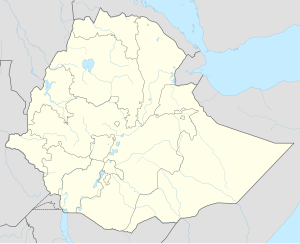Gedeo–Guji clashes
| Gedeo–Guji clashes | |||||
|---|---|---|---|---|---|
| Part of the Ethiopian civil conflict (2018–present) | |||||
| |||||
| Belligerents | |||||
| Guji Oromo[1] | Gedeo people[1] | ||||
| Strength | |||||
| Unknown | Unknown | ||||
| Casualties and losses | |||||
| 1,725 deaths[2] and 800,000 civilians, mostly Gedeo, displaced[1] | |||||
The Gedeo–Guji clashes were a territorial conflict between the Guji Oromo and the Gedeo people, that began in 1995.[1] The clashes led to about 800,000 mostly ethnic Gedeos fleeing their homes, a higher number and over a shorter period of time, than occurred at the height of the more publicized Rohingya crisis in Myanmar the year before. The government pressured the refugees to return to their homes even though they fear for their lives, often by denying refugees access to humanitarian aid.[1]
This conflict is concurrent Territorial conflict with the Oromia–Somali clashes between Oromia Region and Somali region border in the east of the Ethiopia.[3] These ethnic conflicts involving the Guji led to Ethiopia having the largest number of people to flee their homes in the world in 2018.[4] Some have blamed Prime Minister Abiy Ahmed for giving space to political groups formerly banned by previous Tigrayan-led governments, such as the Ginbot 7, Oromo Liberation Front, Sidama Liberation Front and ONLF.[5]
See also
[edit]References
[edit]- ^ a b c d e "Shadow falls over Ethiopia reforms as warnings of crisis go unheeded". The Guardian. 14 March 2019. Retrieved 7 April 2019.
- ^ "UCDP - Uppsala Conflict Data Program". ucdp.uu.se. Retrieved 2020-11-26.
- ^ "What is behind clashes in Ethiopia's Oromia and Somali regions?", BBC News, 15 September 2017, retrieved September 17, 2017
- ^ "Ethiopia tops global list of highest internal displacement in 2018". Relief Web. Retrieved 7 April 2019.
- ^ Ahmed, Hadra; Goldstein, Joseph (24 September 2018). "Thousands Are Arrested in Ethiopia After Ethnic Violence". The New York Times. Retrieved 27 April 2019.

